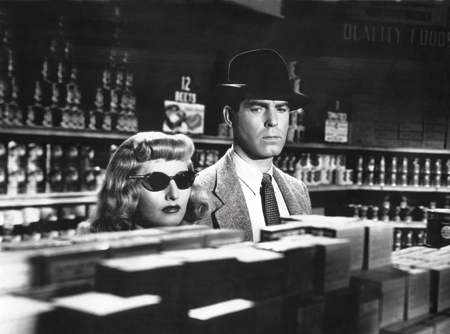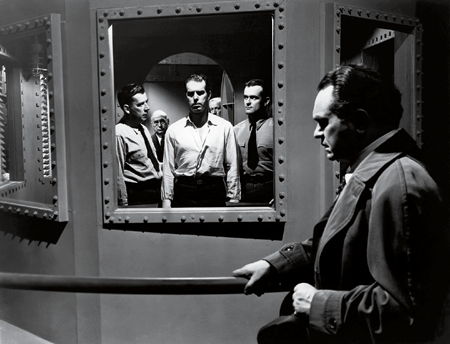
1944

EVERETT
Double Indemnity
DIR. BILLY WILDER

© PARAMOUNT PICTURES, COURTESY PHOTOFEST
Barbara Stanwyck, the avatar of murderous cool, plots with Fred MacMurray in one of Double Indemnity’s most famous scenes.
In 1925, Ruth Snyder, a New York City housewife, began an affair with Judd Gray, an upstate corset maker. Two years later, after forging an insurance policy, the couple killed her husband, trying to disguise the murder as a botched robbery. But the police quickly saw through the charade—and in 1928, the 32-year-old Snyder was electrocuted at Sing Sing prison. An unprecedented photo of the murderess in the electric chair ran in the Daily News under a headline:
“DEAD!”
The case was not only a tabloid sensation but the inspiration for one of the most influential novels of the 20th century: James M. Cain’s Double Indemnity. Also known for The Postman Always Rings Twice and Mildred Pierce, Cain was called “the poet of the tabloid murder” by influential critic Edmund Wilson. The novel, in turn, inspired Billy Wilder’s adaptation—not only the paradigmatic film noir but “the greatest movie ever made,” in the view of Woody Allen.
Starring the usually genial Fred MacMurray as Walter Neff and Barbara Stanwyck as Phyllis Dietrichson—arguably the prototypical femme fatale—the film follows the adulterous couple as they plot to kill her husband for insurance money. Because of its “immoral” elements, the story had been seen as unfilmable. But the wily Wilder found artful ways to avoid censorship—largely through dialogue that relied on metaphor and innuendo. (Consider the often quoted scene between the flirting couple: “There’s a speed limit in this state, Mr. Neff. Forty-five miles an hour.” “How fast was I going, officer?” “I’d say around 90.”)
Much of the credit for this clever repartee goes to Wilder’s writing partner, Raymond Chandler, the pulp genius who had been hired when the director’s usual collaborator, Charles Brackett, found the project distasteful. The pair’s work, though inspired, was contentious: Chandler complained about Wilder’s womanizing and Wilder became exasperated by Chandler’s drinking. (The director’s next film, the noir-inflected The Lost Weekend, was about an alcoholic writer and took inspiration from his experience with Chandler.)
The film’s success helped push the boundaries of what was acceptable in Hollywood and continues to be an enduring inspiration for directors of all stripes. “I love the tone, the worldview, the cynicism, the wised-up quality of the dialogue,” writer-director Lawrence Kasdan tells LIFE, acknowledging the film’s influence on his 1981 film, Body Heat. “It’s just one of the most entertaining films ever made.”

EVERETT
Above: A rare shot of the film’s original ending, in which MacMurray’s Neff is sent to the gas chamber, watched (at right) by his boss, played by Edward G. Robinson. Some have suggested the first ending might have worked better than the final version, because it emphasized the bond between the two men, which has been called the film’s real love story. But director Billy Wilder thought that it was “very anticlimactic.” Though the footage has been lost or destroyed, this shot remains. Below: The lovers at the scene of the crime.

MARY EVANS/RONALD GRANT/EVERETT